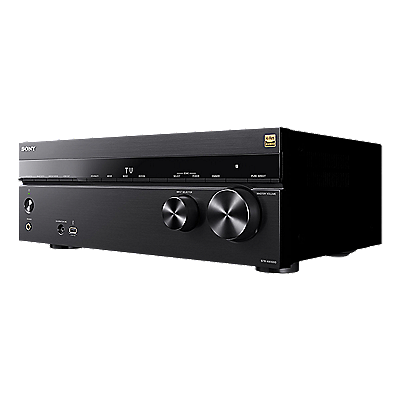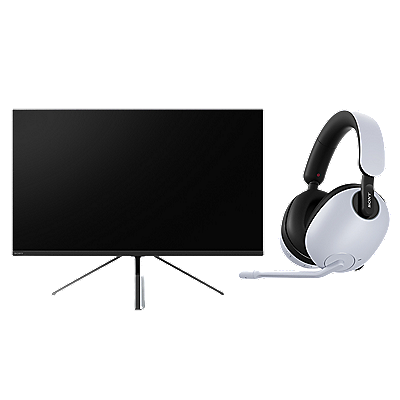Take great pictures with your Xperia camera
Your Xperia device comes with all the latest camera technology from Sony, which helps you to capture those magic everyday moments in clear, vibrant detail. But, with a little craft and know-how, it gets even better! Below, you’ll find some tips and tricks on how to get more out of your Xperia camera and improve your technique.
It’s all about the tech
Your Xperia camera packs in an impressive amount of tech, including a dual camera system and Hybrid Autofocus. The dual cameras work simultaneously to create the highly sought-after bokeh effect, where the subject is in focus and the background is defocused.
The ultra-fast Hybrid Autofocus combines two technologies: contrast-detection for accuracy and phase-detection for speed. Thanks to its wide Auto Focus coverage, your Xperia camera is able to focus accurately on your subject anywhere on the screen in less than a second. And with Superior Auto mode taking care of the settings automatically, you just need to launch the camera and start shooting.
Tip: When the Touch Capture setting is on, you simply touch the screen anywhere you want the camera to focus and it immediately takes the shot.
The artistic touch
You’ve seen that perfect photo with the soft blurry background. It’s the bokeh effect, an effect often used by pro and enthusiast photographers. Now you can easily take beautiful photos with the bokeh effect using the dual camera system on your Xperia.
When taking a photo, set the mode to Bokeh and shoot. It’s really that easy! The main camera and the second camera is used simultaneously to instantly create a defocused background. You’ll be surprised at how nice the picture will look with a little bokeh. It really adds that artistic touch!
Manual mode
Manual mode offers several settings to help you take better pictures depending on your environment.
Manual mode works best in situations where you want to have more creative control over the final image and you have the time to get it right. From shutter speed to exposure value, you can play around with the settings to achieve ‘the shot’!
Tip: If you’re having trouble keeping up with a moving object, you can enable ‘Object tracking’. With this feature you can select an object by touching it on the screen. The camera then tracks it for you.
Stunning videos, all the time
Whether shooting videos of friends and family having a good time or kids doing the ultimate skateboard trick, the Xperia camera will handle it all!
Setting the resolution to 4K will make breath-taking high resolution videos while the SteadyShot™ feature will make sure your videos are buttery smooth. For that awesome stunt your friends are going to try, set the mode to Slow motion. The video will be shot in 120 frames per second and you’ll be able to edit which parts you want to slow down afterwards.
Tips and tricks
Now that we’ve told you a little more about the technology inside your Xperia camera, it’s time to give you the hands-on tips and tricks we promised.
More focus and less blur
- Make sure the lens is clean – you’d be surprised how much a fingerprint mark or a little dirt can diminish the quality of your photos.
- If you are having trouble with blurry shots, check to see if your smartphone cover is obstructing the flash or lens. You can even try removing the cover to avoid any unwanted reflections.
- If your Xperia has a dedicated Camera key, use the Camera key instead of tapping the Camera button on the screen. By using the Camera key, you naturally keep your fingers away from the screen and around the frame of the phone. This helps to steady your device before you take photos.
- Use the self-timer function to further avoid shaking the camera when taking photos. You can also use a tripod to achieve optimal image and video stability.
- Try moving your smartphone around with the Camera key half pressed and look for a spot where the picture comes into focus. Once the focus is set, the circular frame turns blue.
- You can also set the focus by touching the point of the screen that you want to focus on.
Get high quality in low light
- The main trick is to keep the camera steady. Place your smartphone on a hard surface or, better still, use a tripod and the self-timer.
- Shooting in Manual mode, the ISO or light sensitivity level can be manually adjusted ranging from 50 to 3200.
- To achieve more control, shoot in Manual mode and adjust the shutter speed (SS), exposure value (EV) or white balance (WB) settings. You can also change to focus manually.
- Several different flash settings are available in all three shooting modes. These are especially useful when lighting conditions are poor or when there is a backlight.
Bring out your inner photographer
- Get to know your camera. Check out the main settings and modes before you use it, and refer to the User guide. Practice makes perfect!
- Learn how to look for light with direction and colour that gives a scene shape and depth. This type of light happens naturally just before sunrise and at sunset. Window light can also be good.
- When taking photos of moving objects, try not to follow the object. The trick is to find a position from where the object has to pass in front of you.
- If you can't fit the whole subject you want to photograph in one frame, try using the camera app ‘Sweep Panorama’ to get a wider angle.
- Activate the Grid lines in your camera settings so that you can shoot using the ‘Rule of Thirds’. Try placing your subjects along the grid lines or at the points where they intersect. By not always having the subject in the middle of the frame, you can make your photos more interesting.
- Be creative and try different angles. You’ll be amazed how your picture can change by just getting down on your knees or stomach. But stay safe!
Stay on top of your game
- If your Xperia has a Camera key, you can activate the camera immediately, even when the device screen is locked. Simply press the Camera key briefly and you’re set to go. You can also select a Launch with camera key setting so that the camera immediately starts taking photos when you launch the camera with the Camera key. This way, you’ll never miss a great moment.
- Use the ‘Creative effect’ app in your camera to boost photos before you take them. For example, you can add filters, pixelate photos or create a mirror effect.
- You can also take photos while recording a video. Just press the Camera key or on-screen Camera button while the video is recording.
- Enable the ‘Save location’ function to geotag your photos by saving the approximate geographical location as you shoot.
- Update your smartphone software regularly to get the latest camera functionality and improvements.
Back to selfie school
- Use the self timer so that you have a few seconds to steady the camera before the shot.
- Use the Smile Shutter feature to automatically trigger your selfies with a smile. This is another good way to avoid touching and possibly shaking the screen.
- Use the AR effect app to play around and add effects while you’re taking selfies.
- To reduce shake when shooting videos of yourself using the front camera, make sure you’ve got SteadyShot turned on.
Good to know
- Some camera features use more battery than others. So, for example, if your camera supports shooting 4K videos and your battery is running low, you can stick to 1080p resolution. This way, you still get high quality videos but more staying power from your device.
- Keep in mind that 4K videos and 23MP (high resolution) photos take up a lot of space on your internal memory or memory card, making it a good idea to check the memory status from time to time. And remember you can still achieve high quality photos using 8MP resolution.
- Be aware that your smartphone may sometimes get hot when the camera is used for prolonged periods of time. In some cases, the camera app may close temporarily.
Please note that this article is not product specific. Features and functionalities described may therefore differ depending on your device and/or software version.























